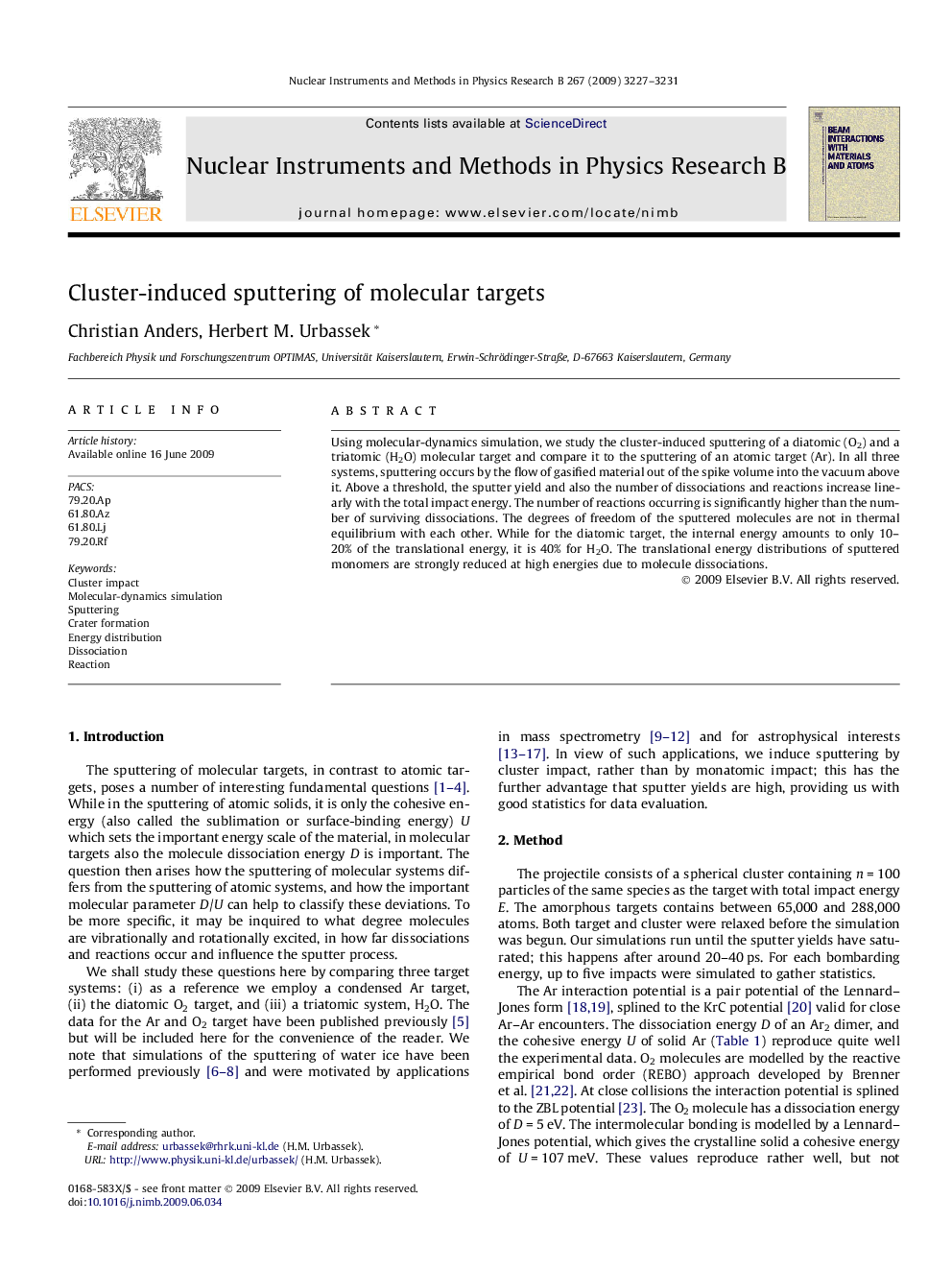| Article ID | Journal | Published Year | Pages | File Type |
|---|---|---|---|---|
| 1687034 | Nuclear Instruments and Methods in Physics Research Section B: Beam Interactions with Materials and Atoms | 2009 | 5 Pages |
Abstract
Using molecular-dynamics simulation, we study the cluster-induced sputtering of a diatomic (O2) and a triatomic (H2O) molecular target and compare it to the sputtering of an atomic target (Ar). In all three systems, sputtering occurs by the flow of gasified material out of the spike volume into the vacuum above it. Above a threshold, the sputter yield and also the number of dissociations and reactions increase linearly with the total impact energy. The number of reactions occurring is significantly higher than the number of surviving dissociations. The degrees of freedom of the sputtered molecules are not in thermal equilibrium with each other. While for the diatomic target, the internal energy amounts to only 10-20% of the translational energy, it is 40% for H2O. The translational energy distributions of sputtered monomers are strongly reduced at high energies due to molecule dissociations.
Keywords
Related Topics
Physical Sciences and Engineering
Materials Science
Surfaces, Coatings and Films
Authors
Christian Anders, Herbert M. Urbassek,
